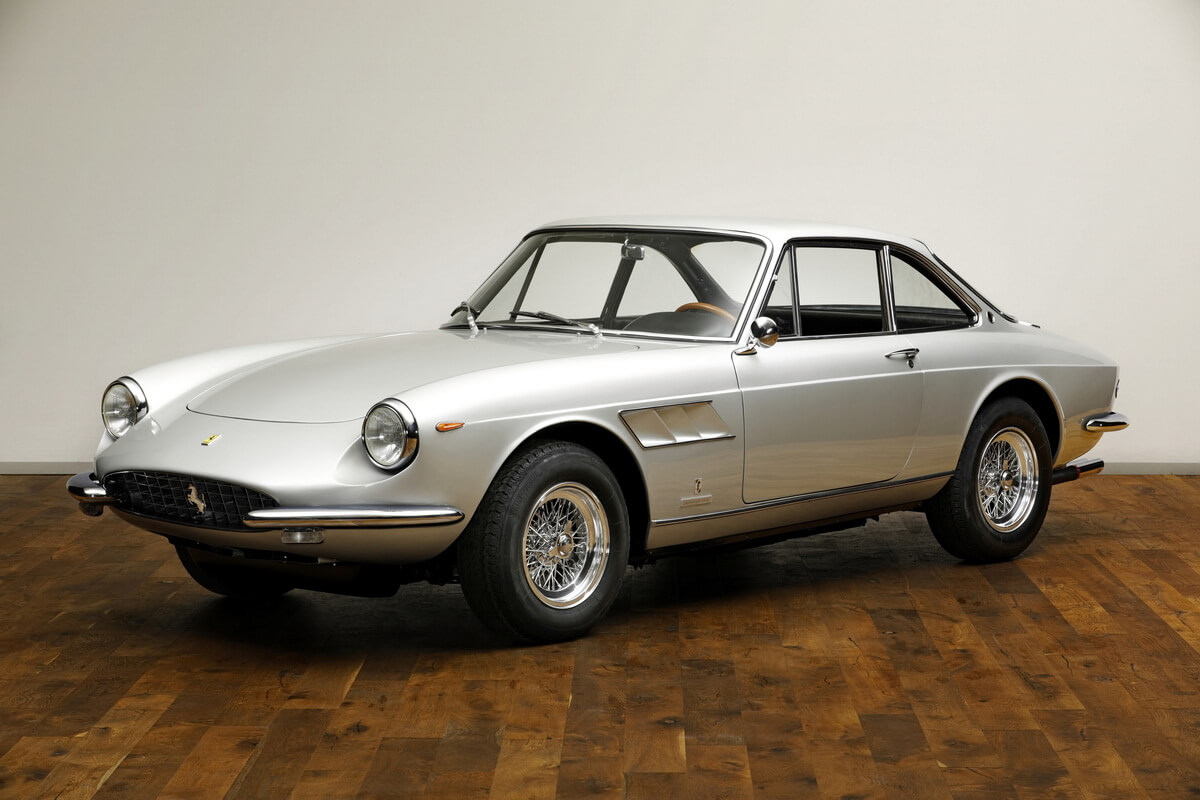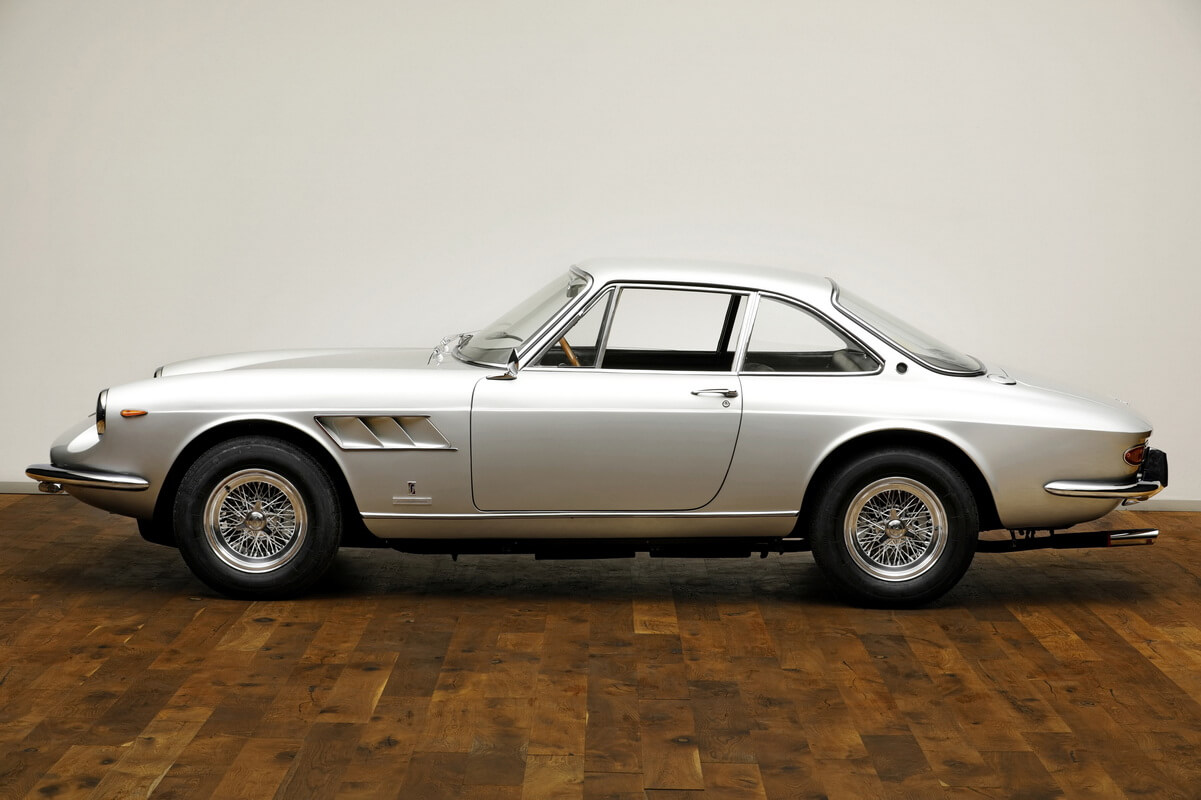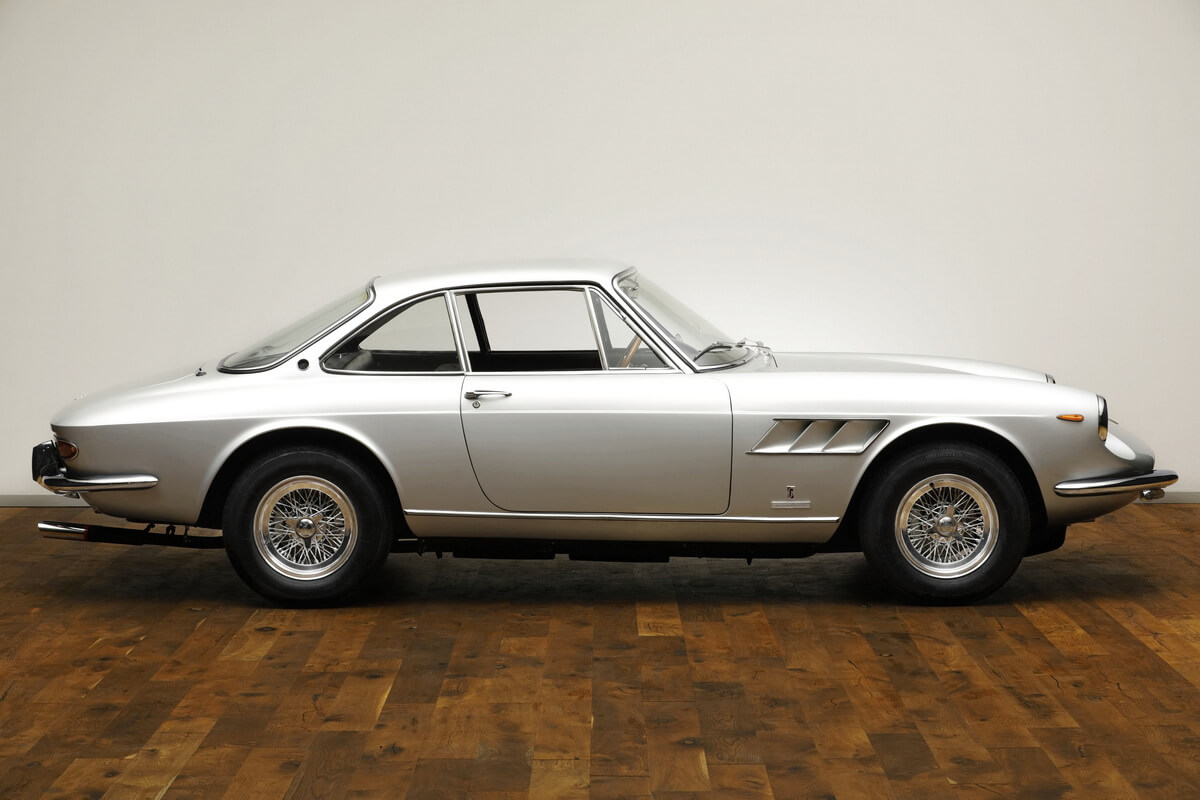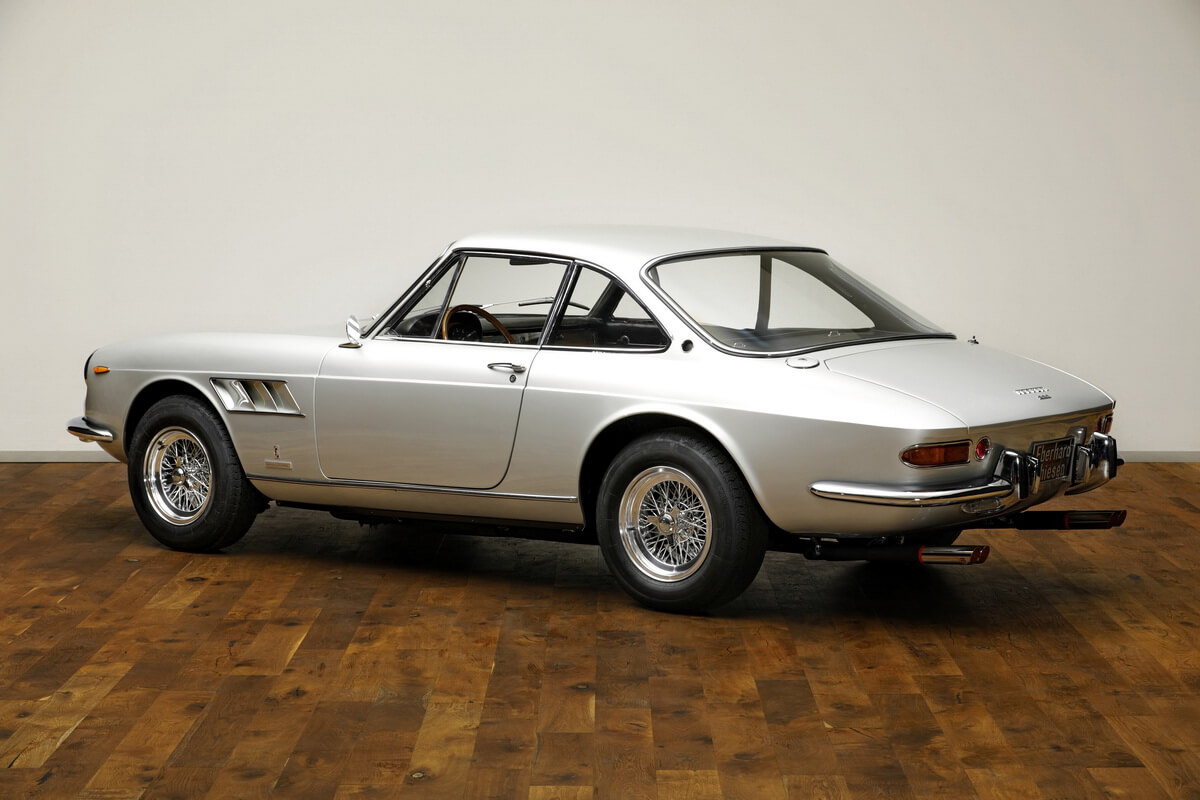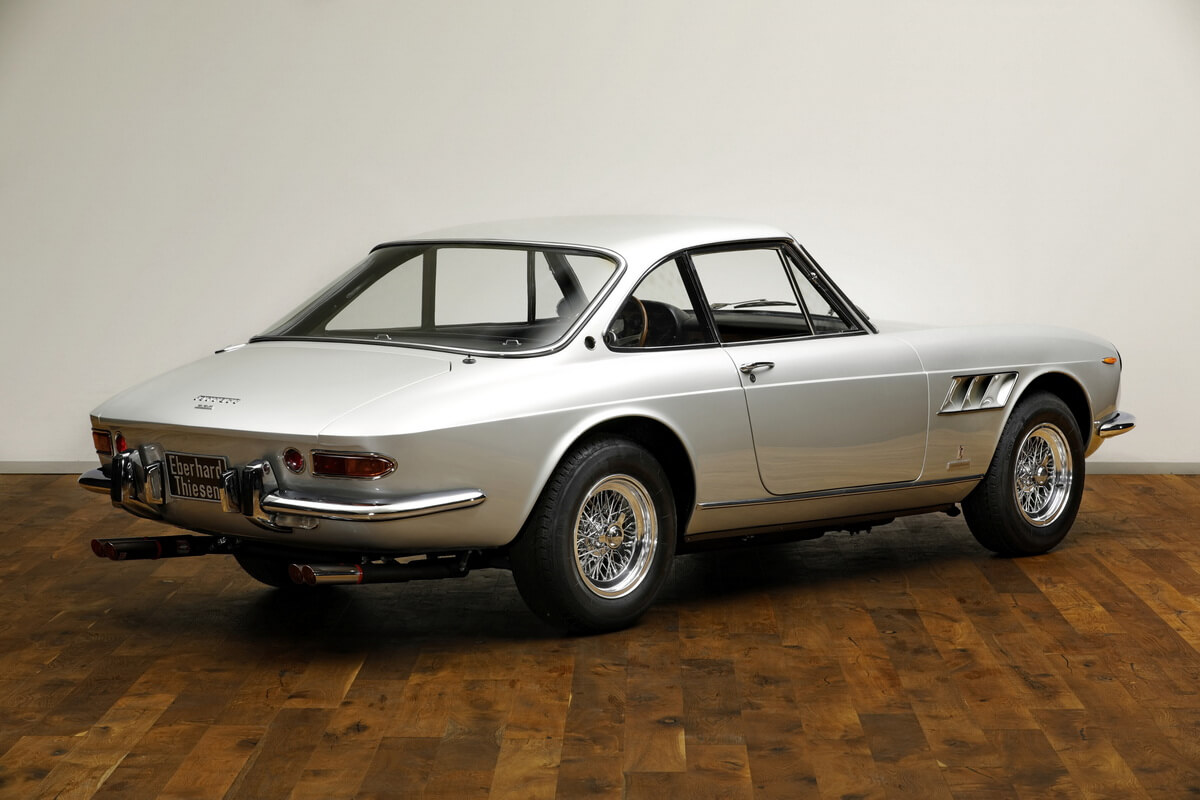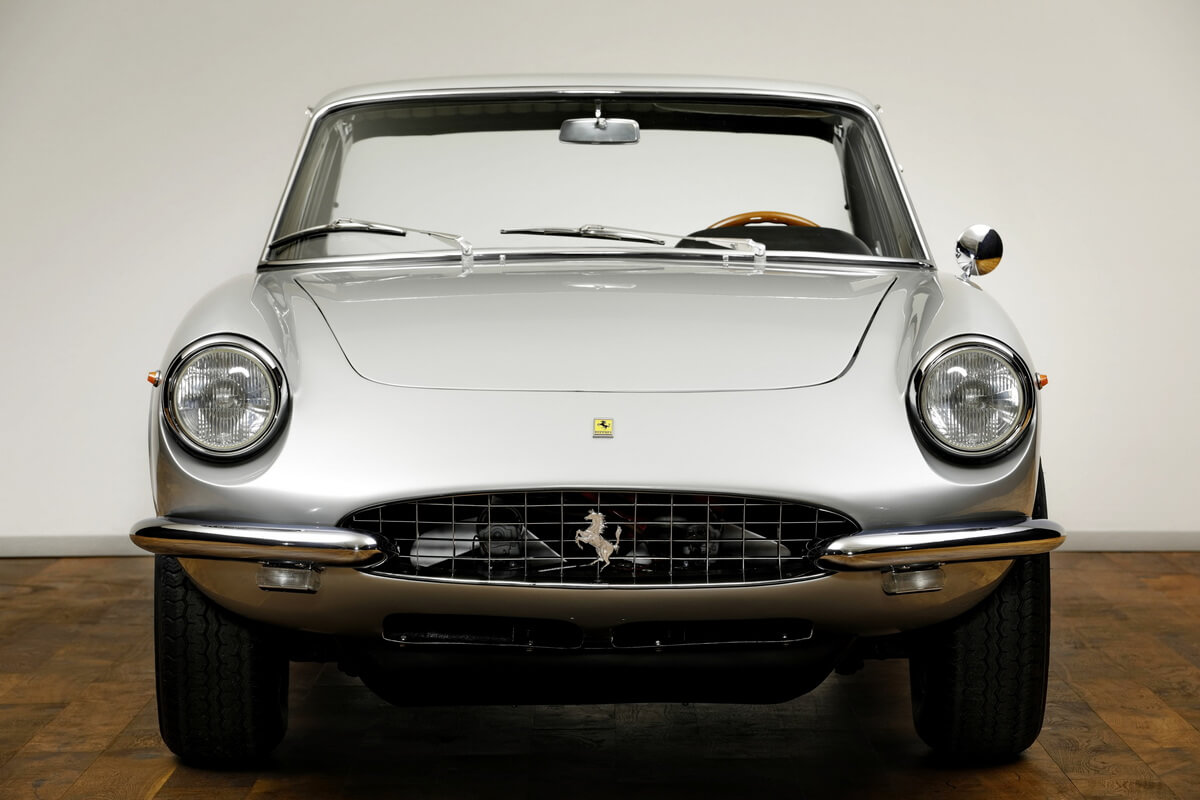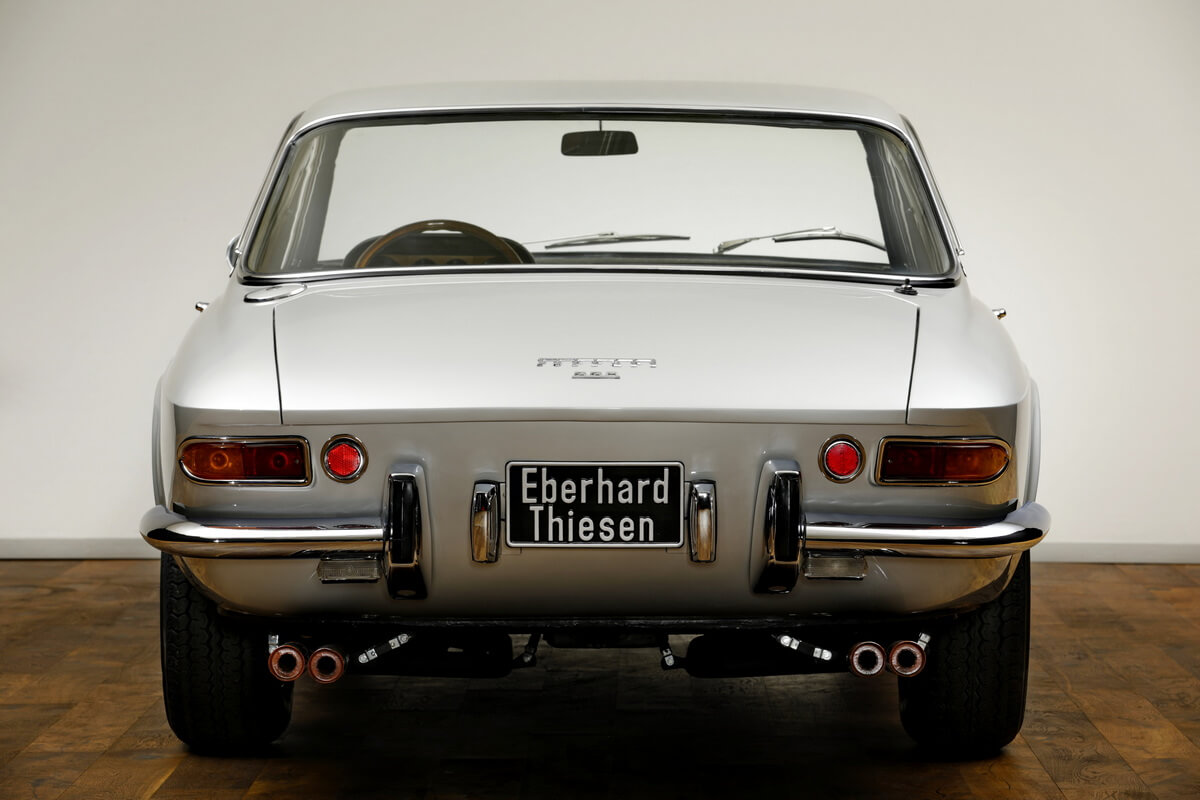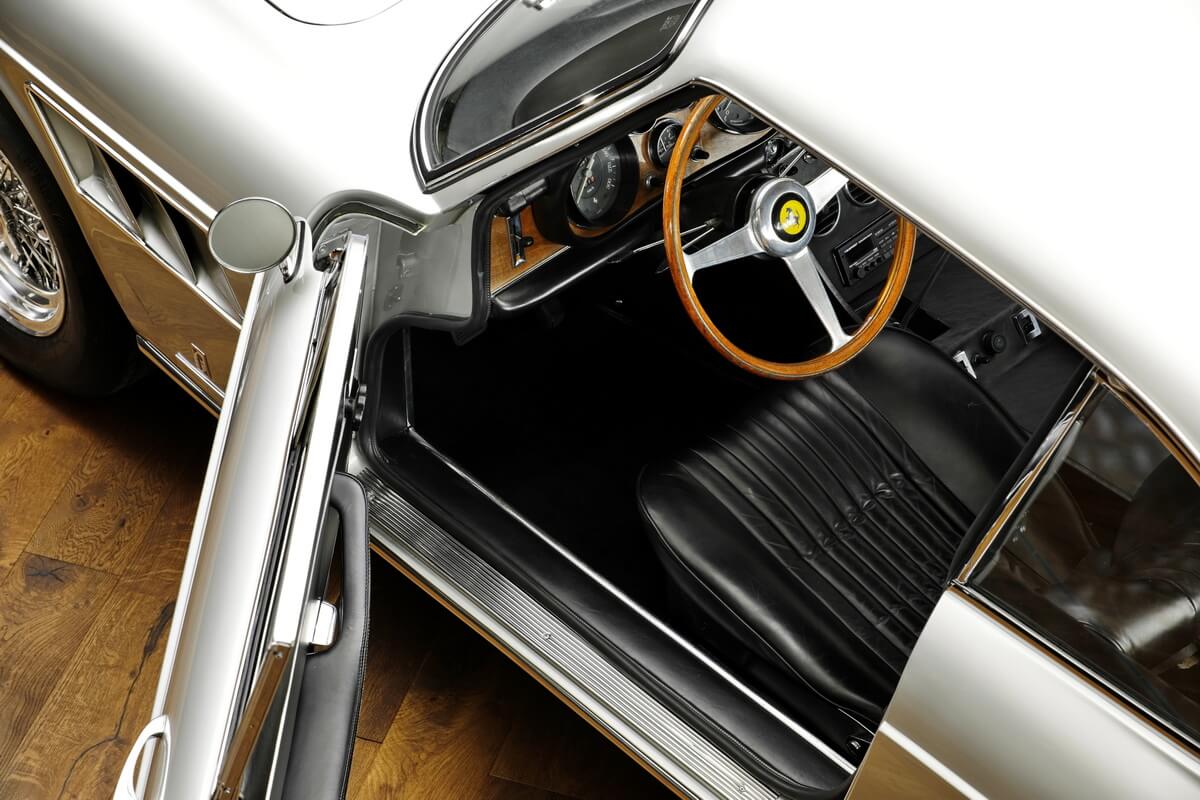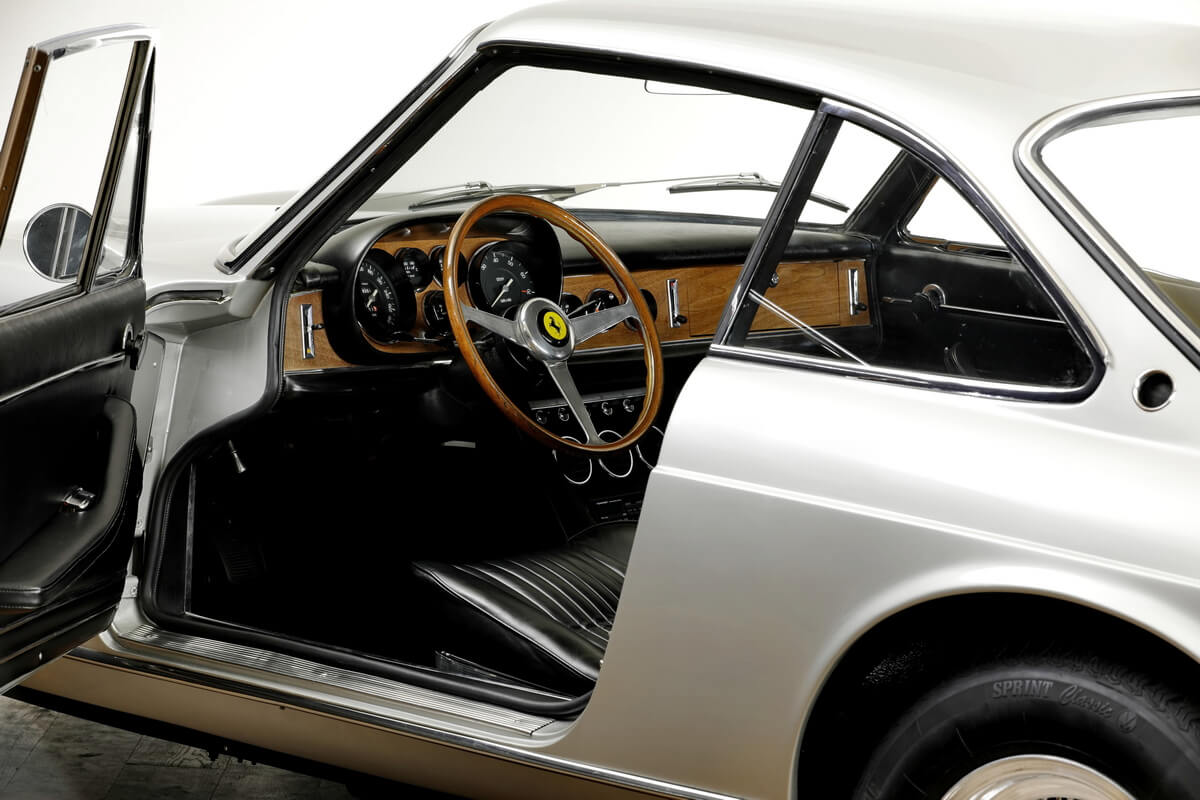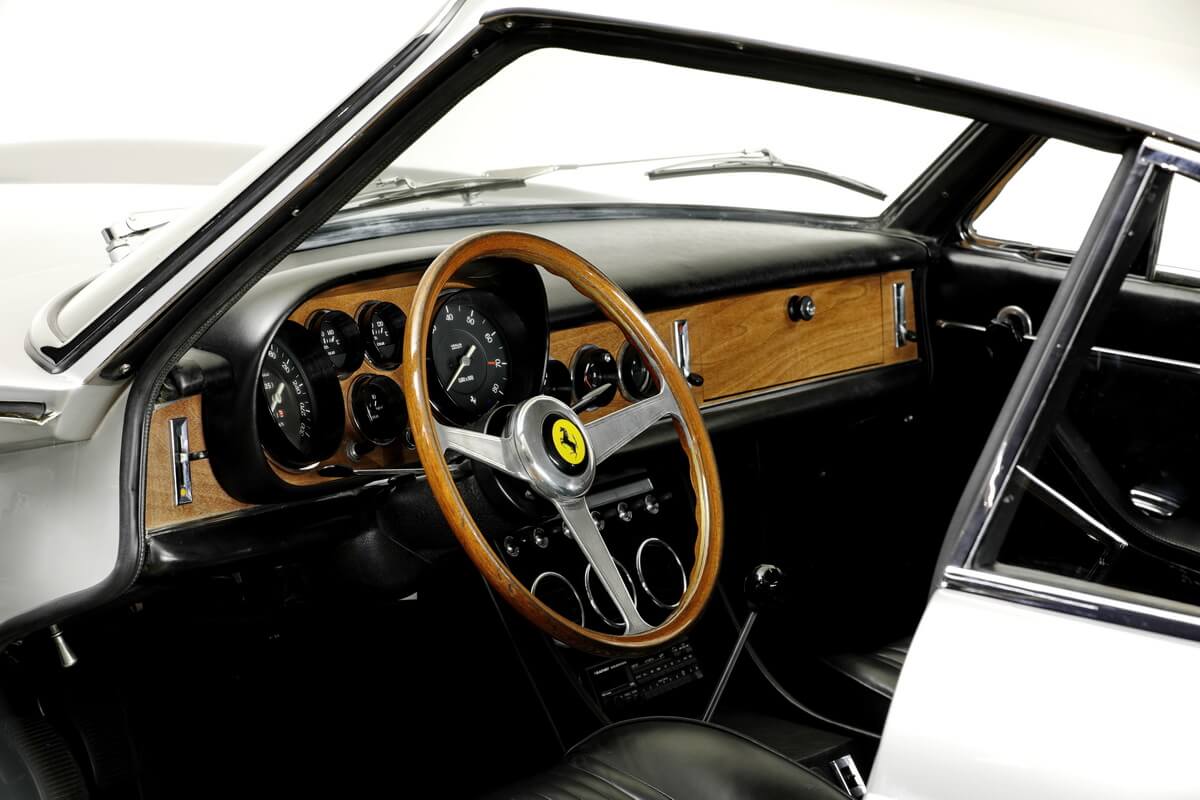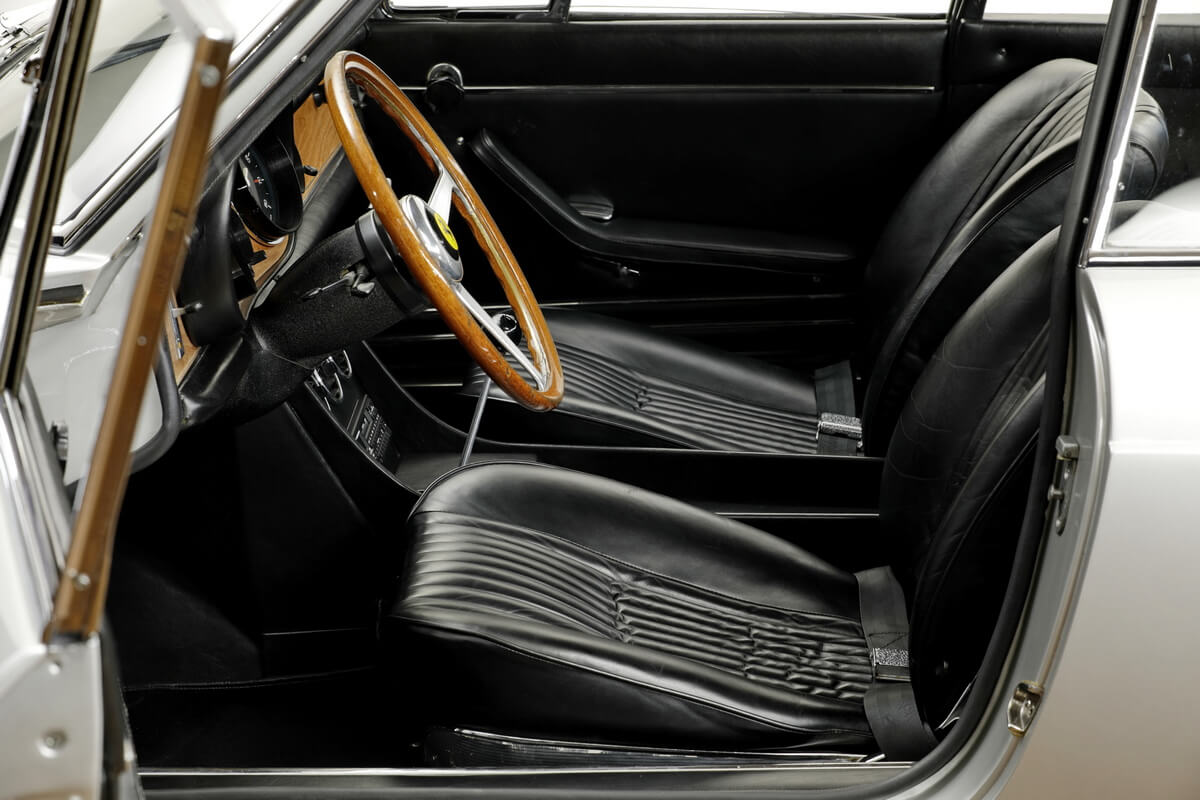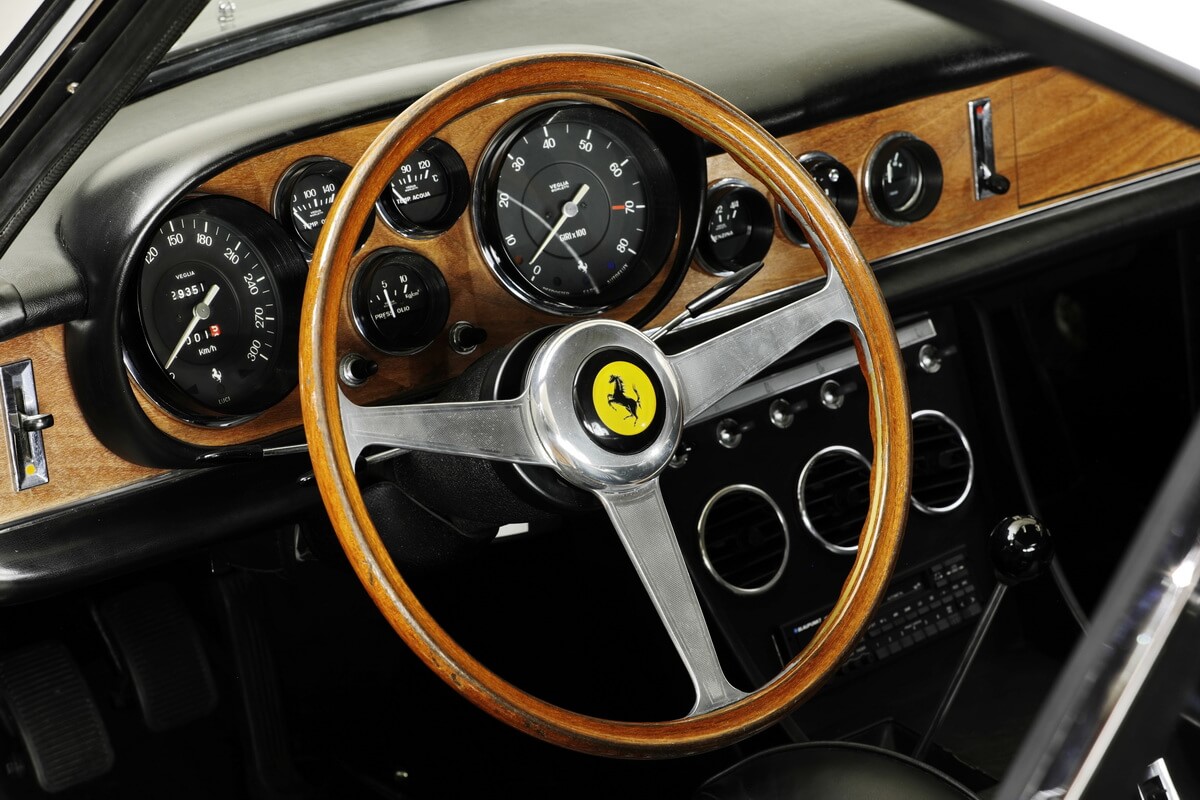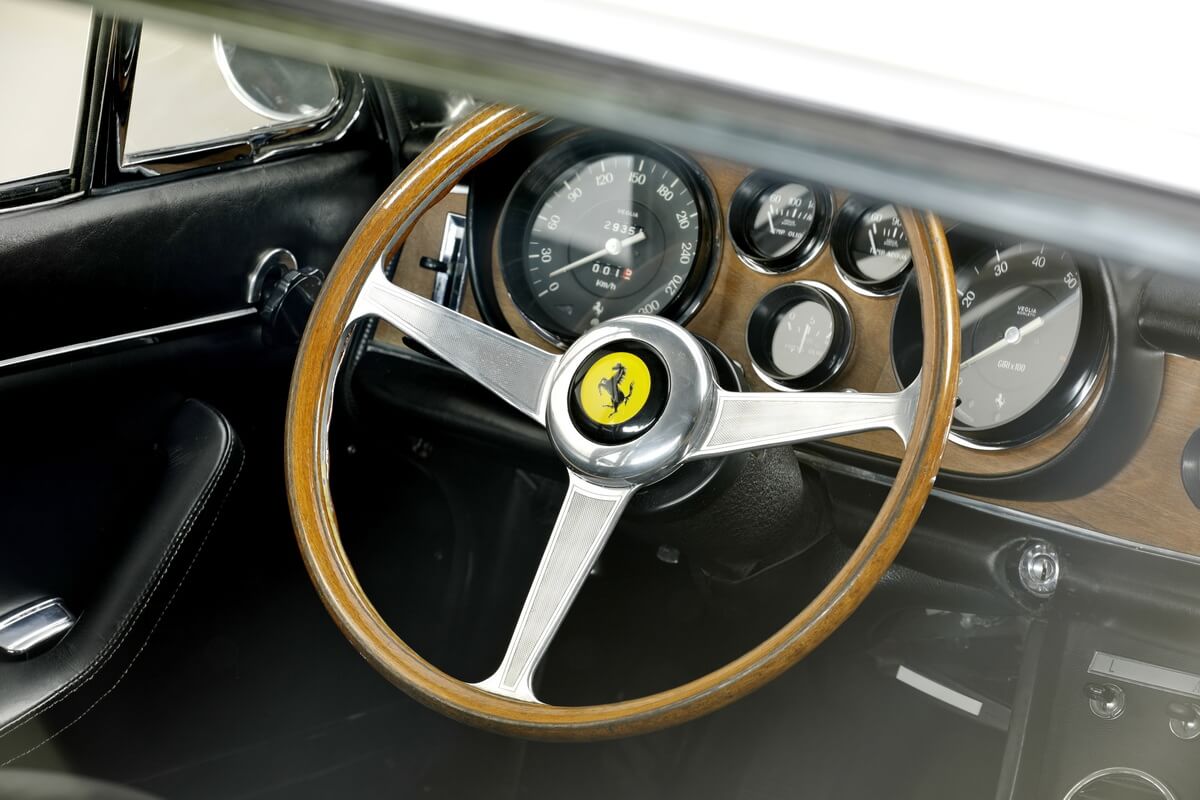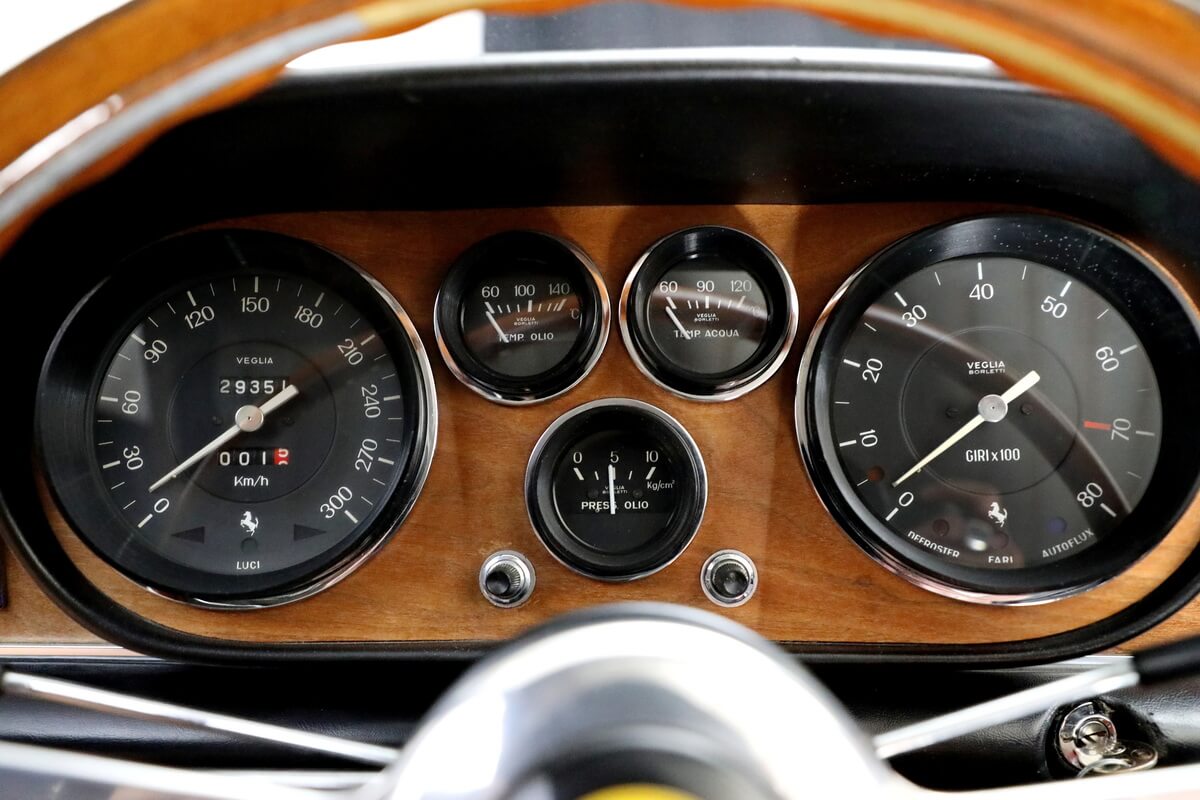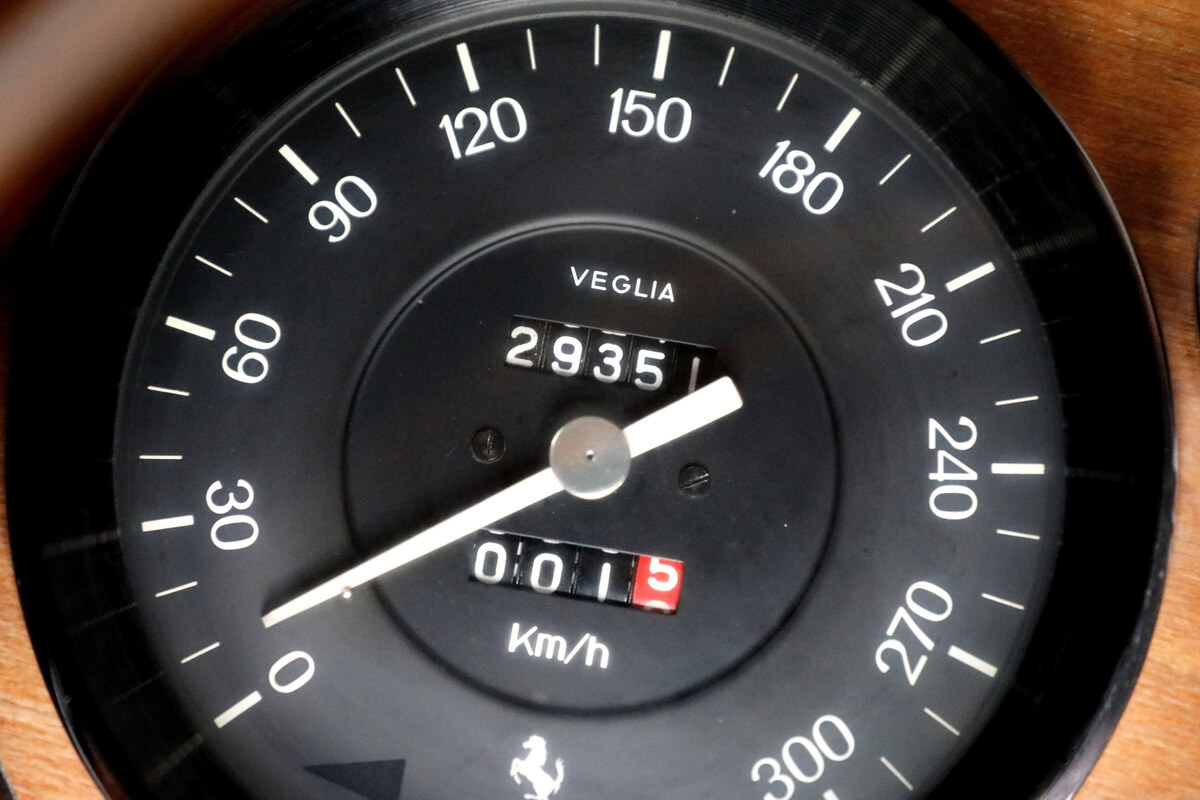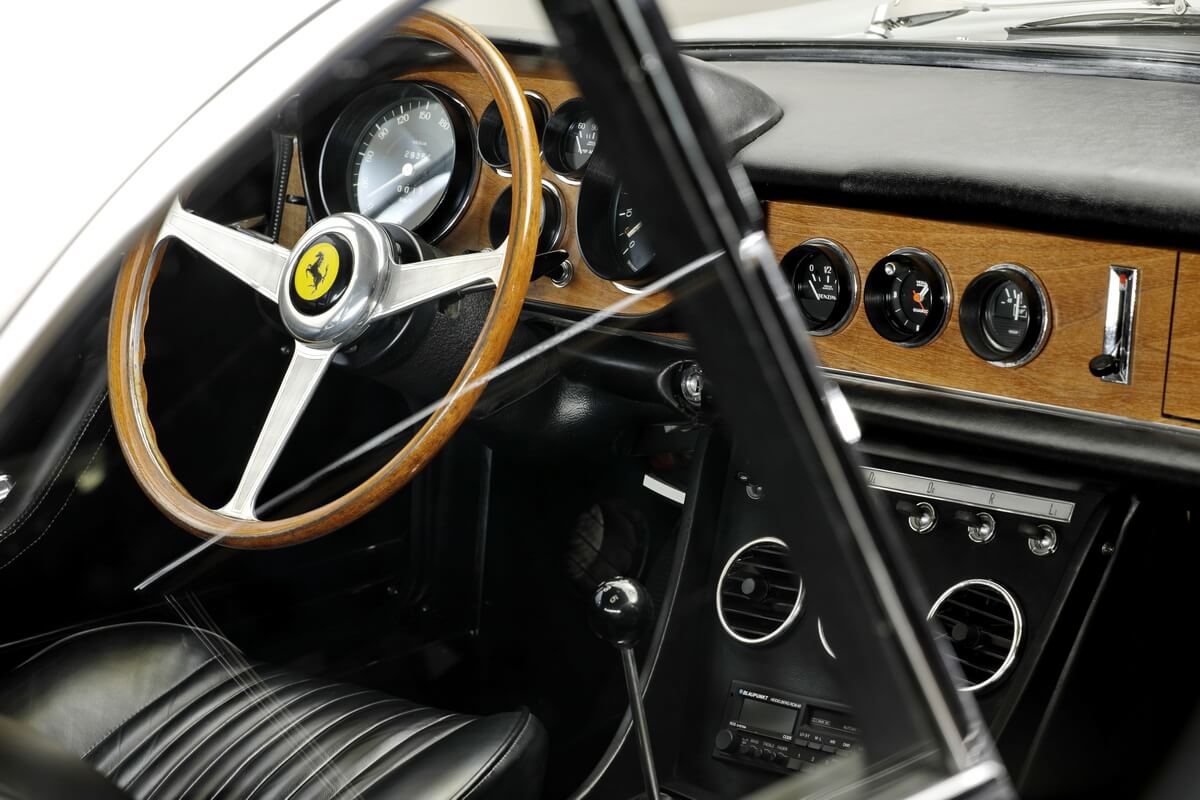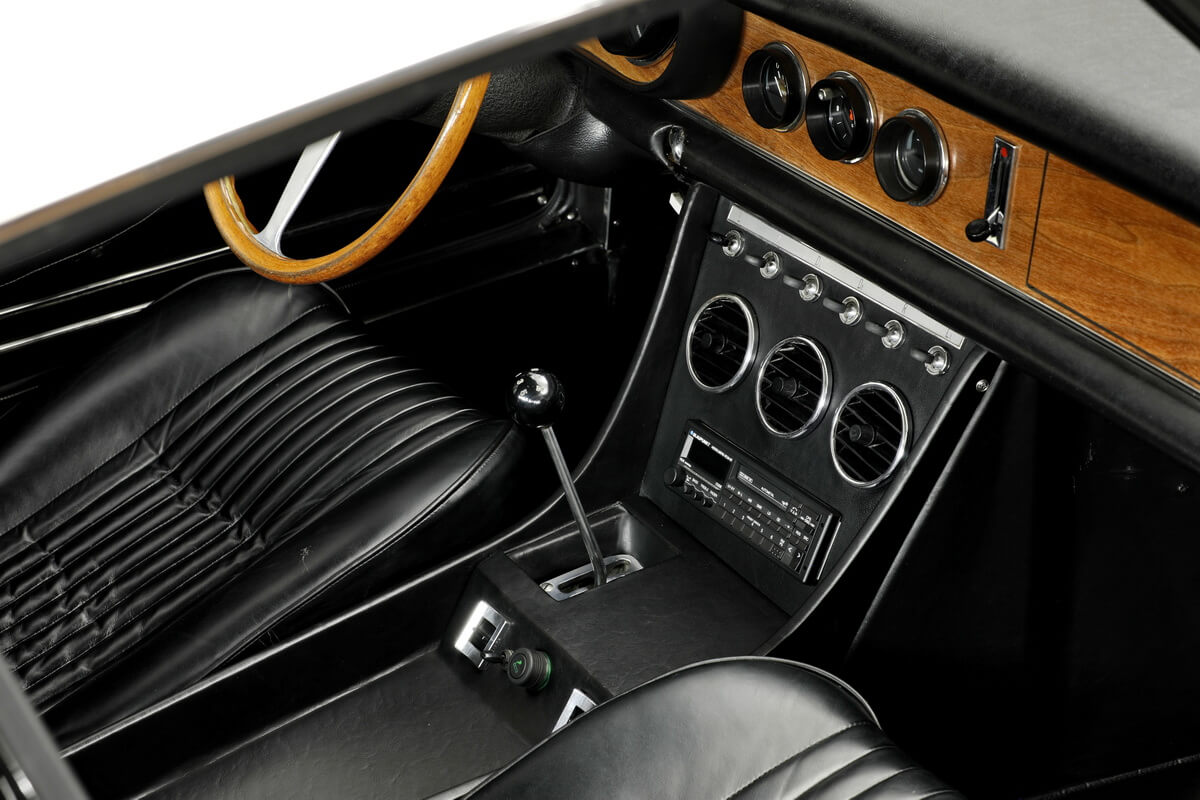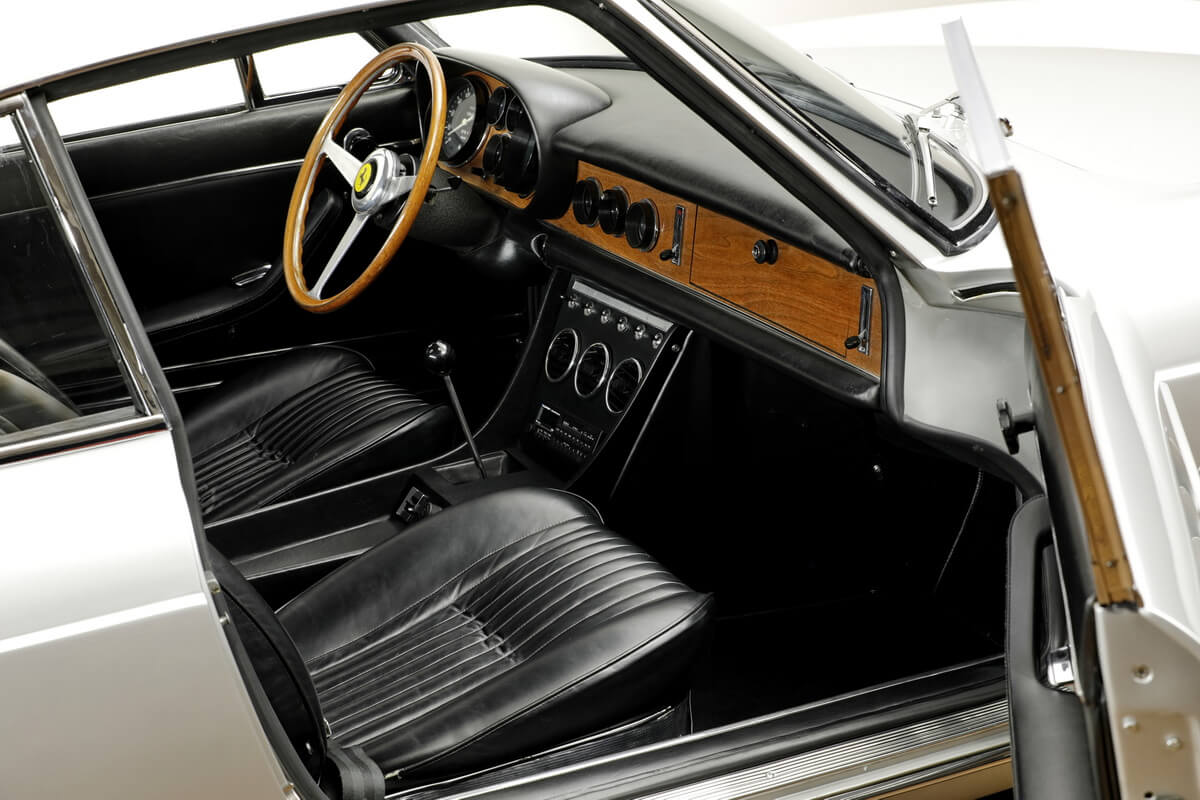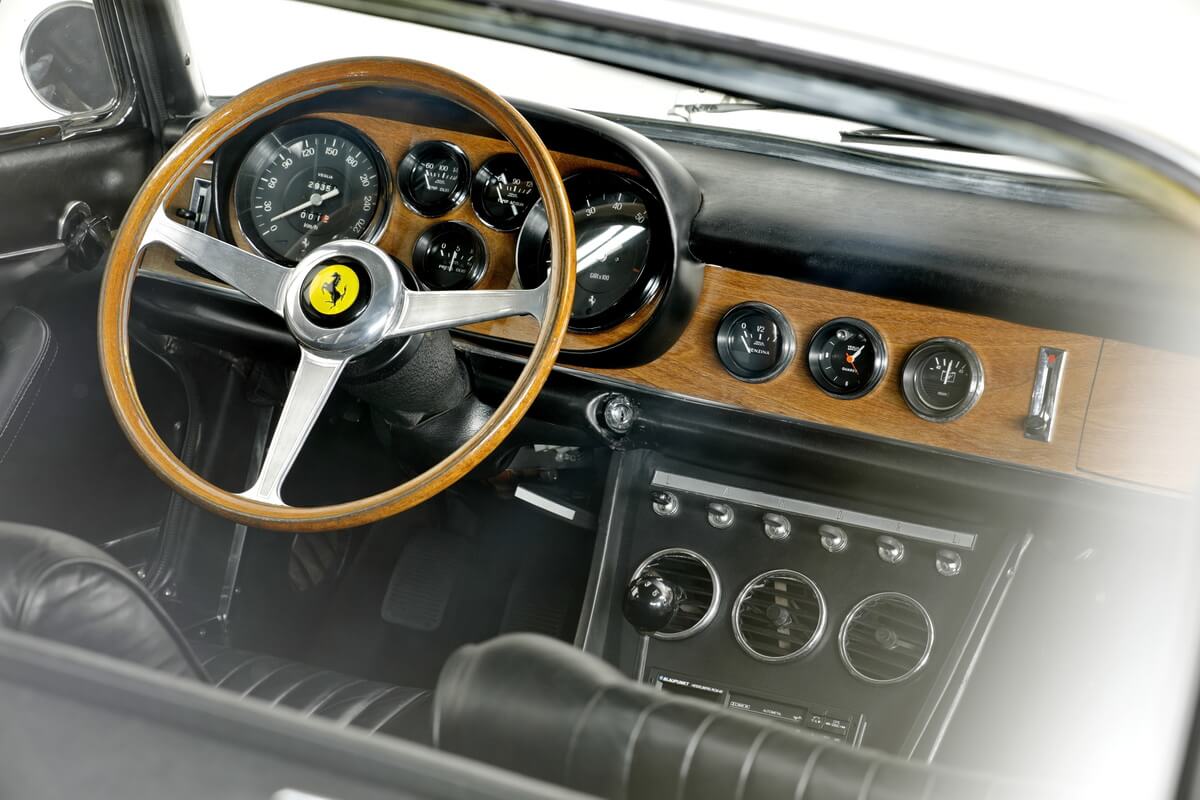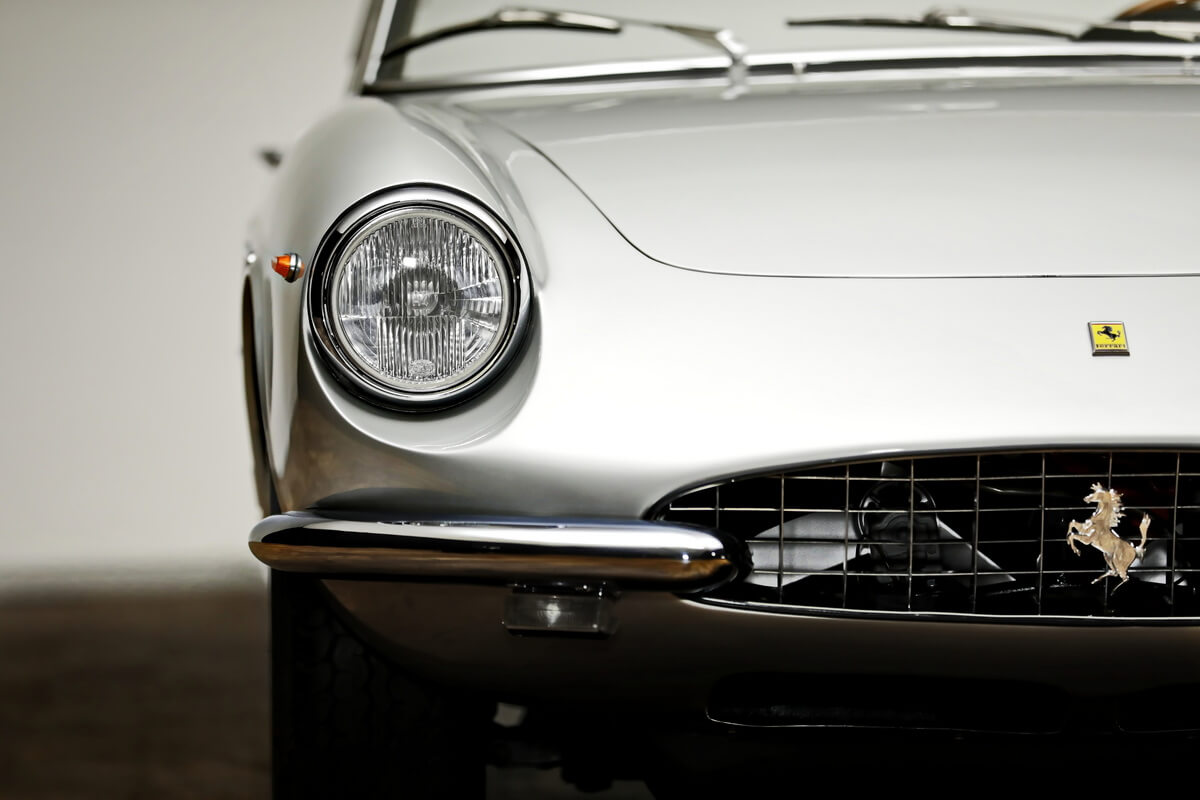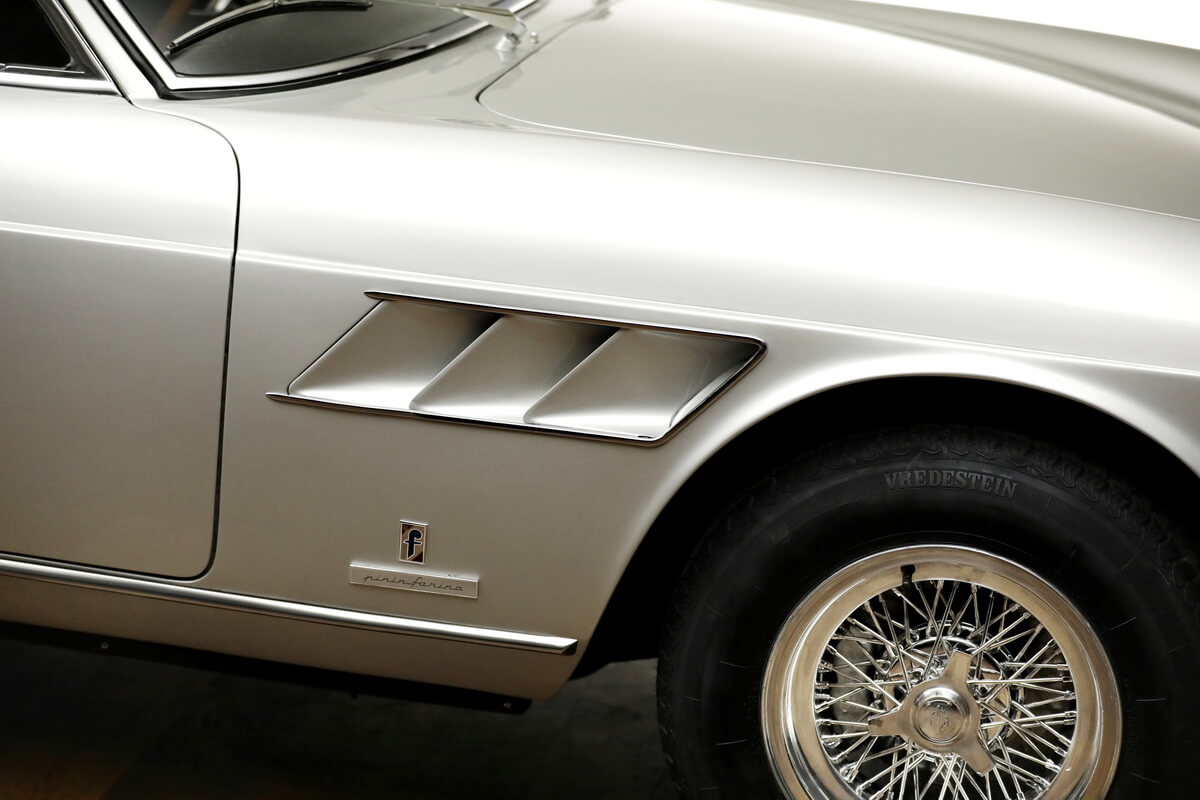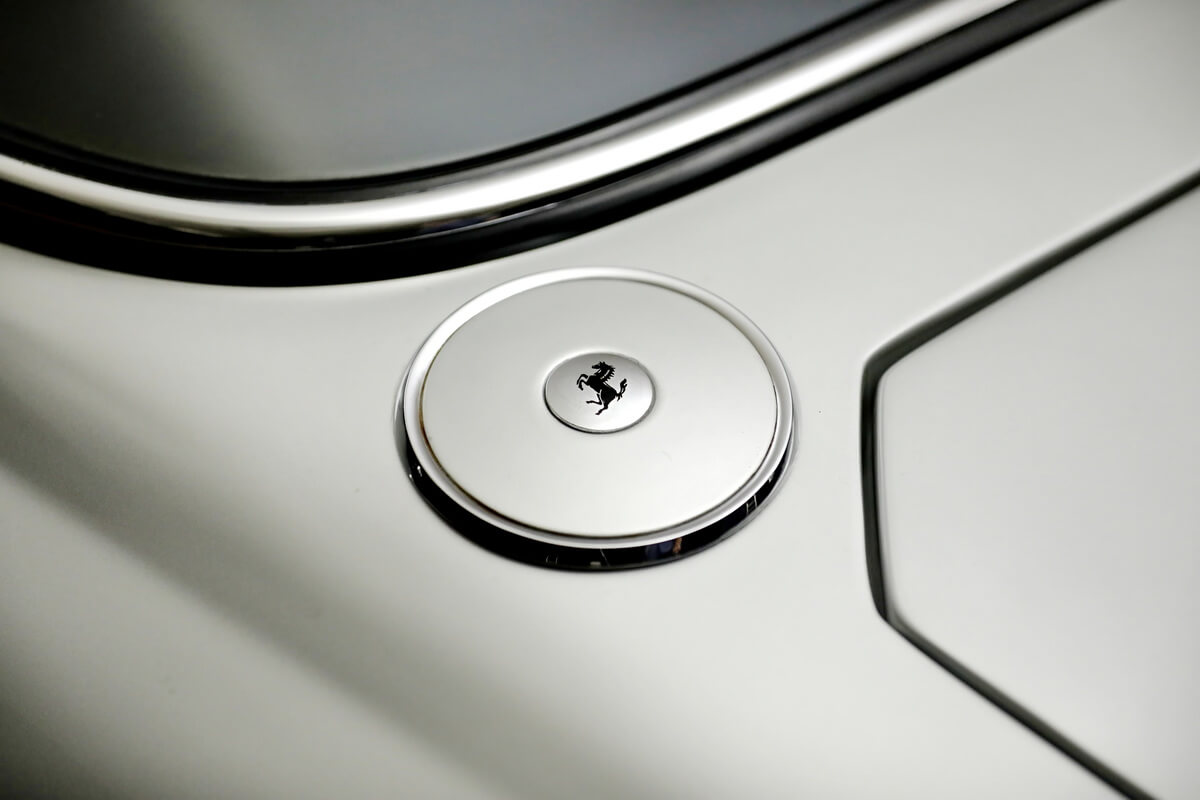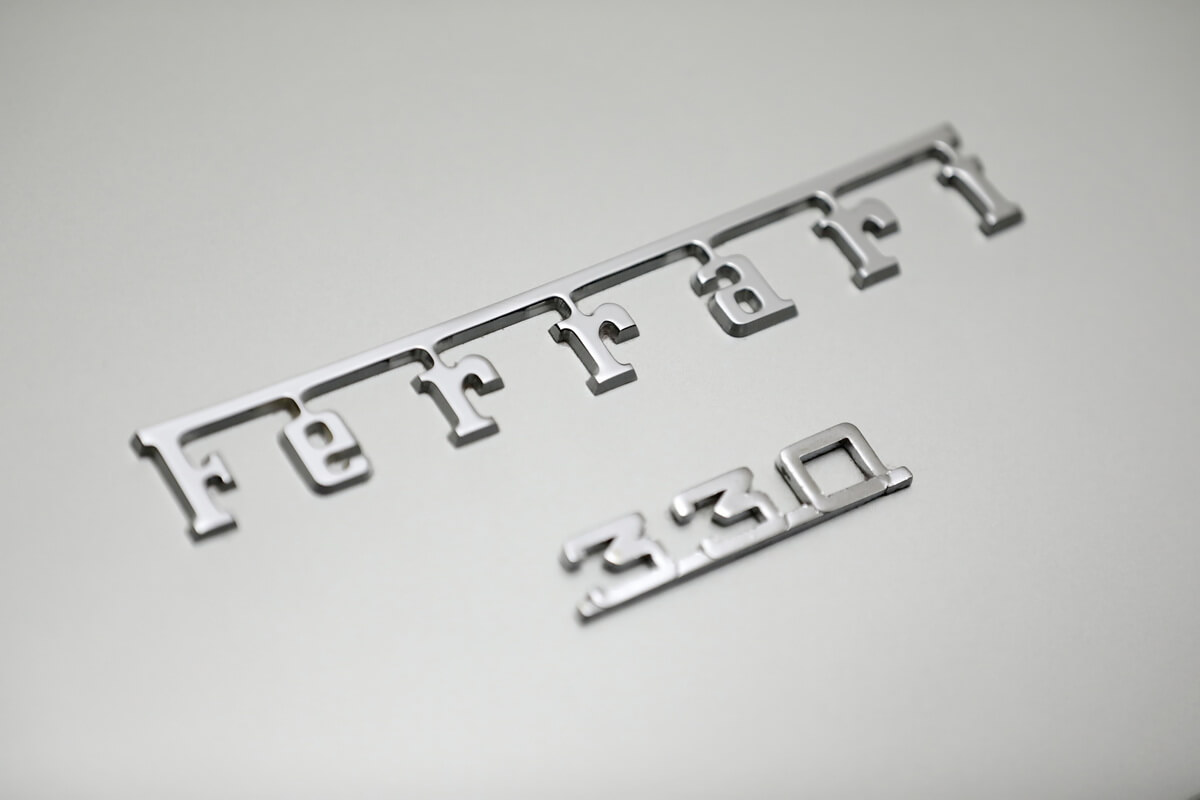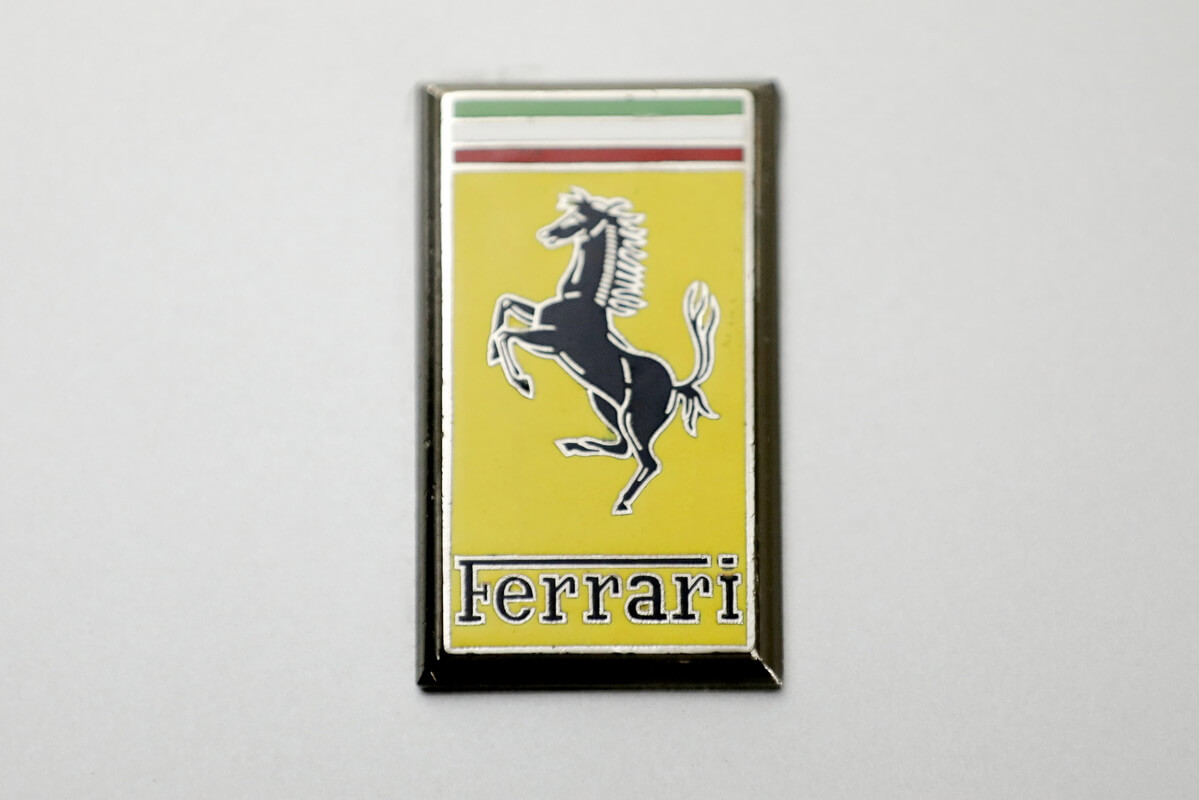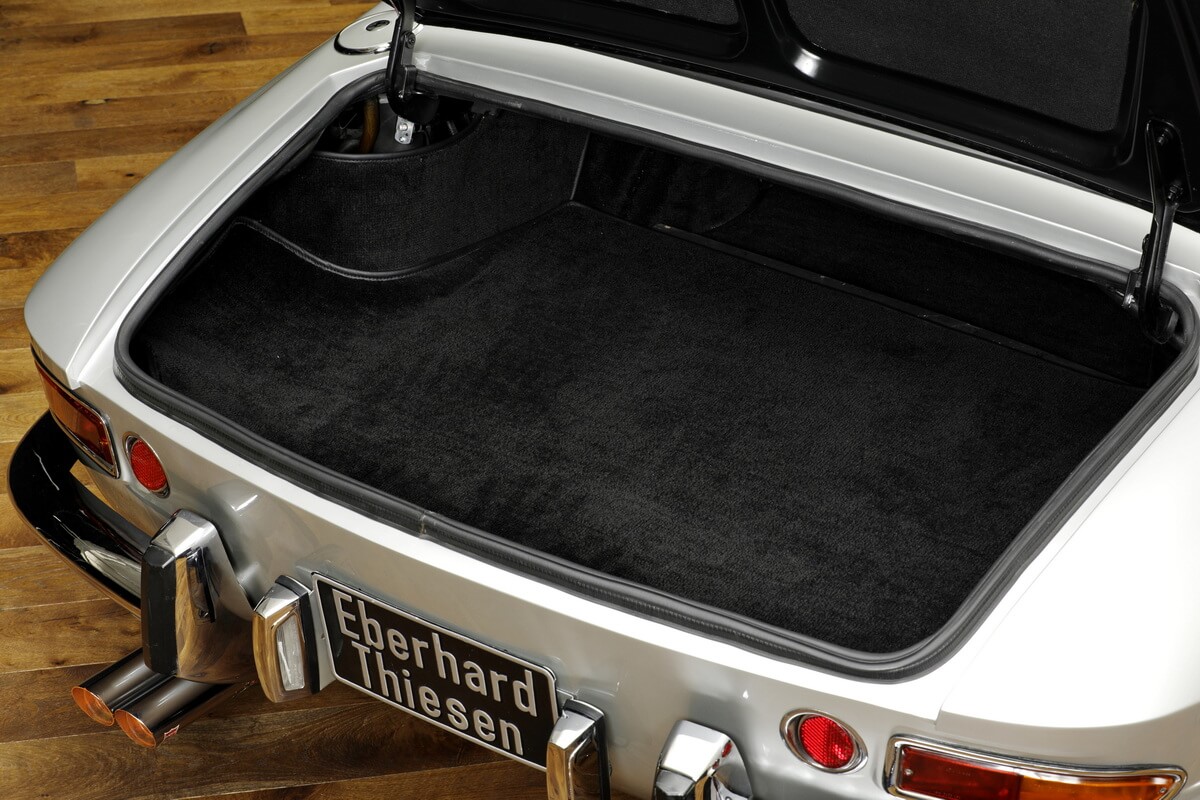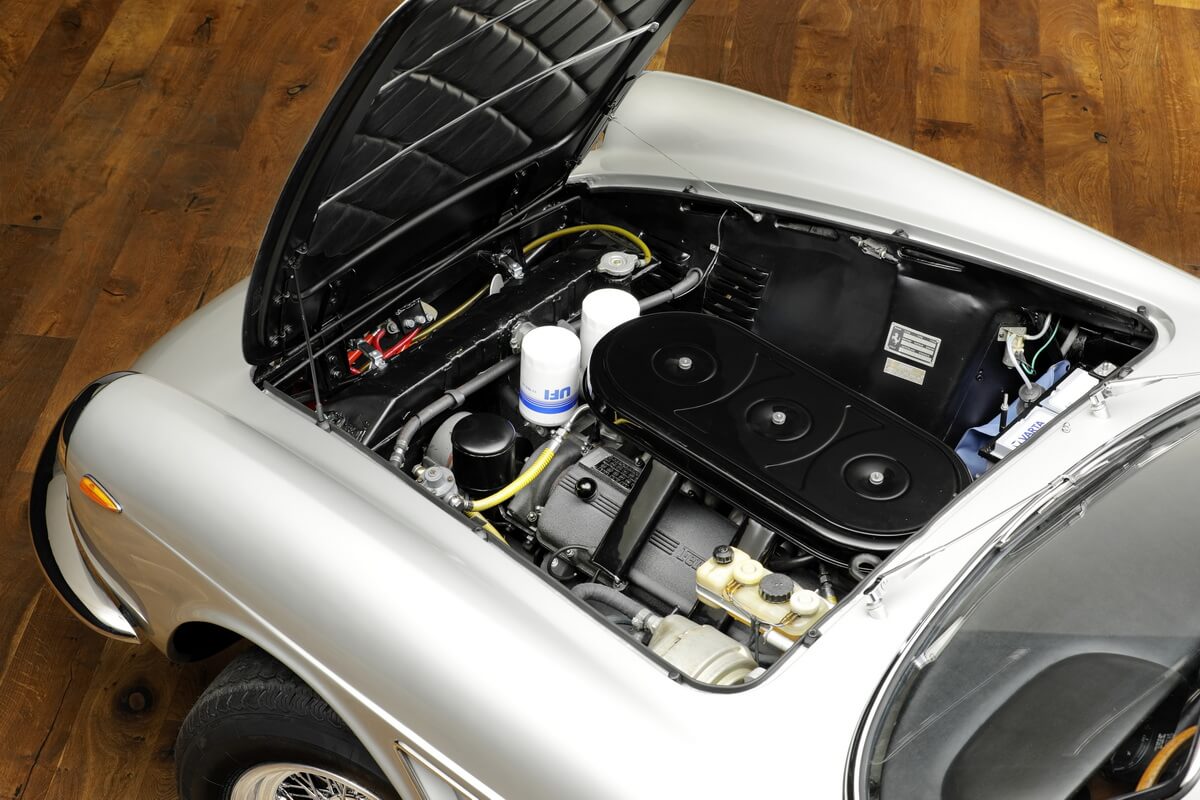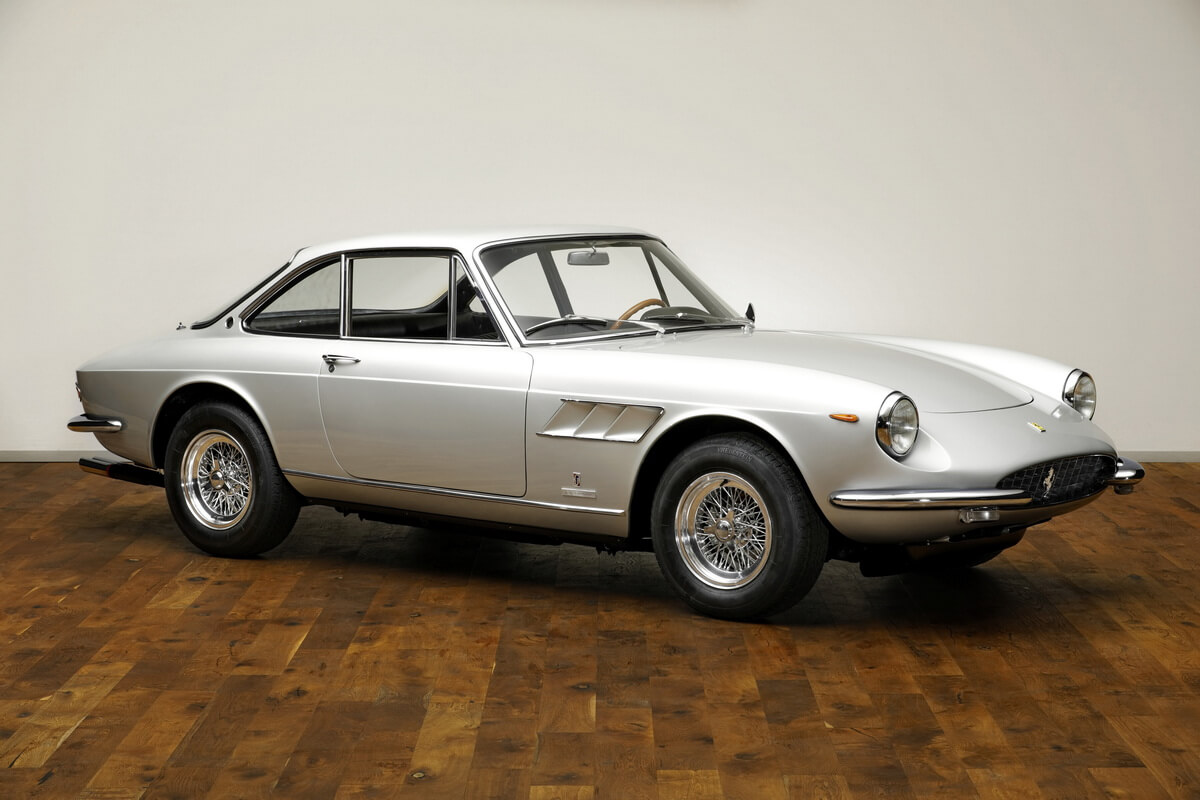Ferrari 330 GTC
Highlights
Data & Facts
This Automobile
This Ferrari 330 GTC was delivered in 1968 through the Ferrari dealer Crepaldi Automobili in Milan, Italy. The original colour scheme was Argento Metallizzato (grey metallic) with a leather interior in black, which the car wears again today.
The car later made its way to the USA, where it was painted black and fitted with a red leather interior in the 1970s. In 1979, the 330 GTC was offered for sale through a dealer in California and came to a new owner (name known) in Santa Barbara, California. Three years later (1982) the car was passed on to another owner (name known) in Salt Lake City. Under his ownership, a new paint finish in yellow was carried out in 1986/1987 and the interior was returned to its original black colour. Together with new Borrani wire wheels and a new exhaust system, the sports coupé was sold at auction in Scottsdale (USA) in 1989 to a new owner (name known) in Tucson, Arizona (USA). At the beginning of the 1990s, the car came to Switzerland and was registered there in 1991/1992. This Swiss registration document is available.
In 2014, the 330 GTC then came to a classic car trader in Denmark (name known) and was sold by him to its last owner in Germany in 2015. Under this owner, the vehicle including body was then extensively repaired in 2017 and painted in the color silver metallic. Nevertheless, the car is not (yet) perfect in detail. The paint has a nice shine but is not flawless. The trim is complete and in well-kept condition with a slight patina. The interior overall gives a good impression with a renewed leather interior and shows only a few detail weaknesses. The underbody is in solid condition and parts of the suspension and brake system have already been overhauled. In addition, a like-new Ansa Classic exhaust system is installed. The engine is "Matching Numbers".
This Ferrari 330 GTC is particularly suitable as a "Driver Car" and offers an excellent and above all complete basis for further optimization measures, which can be carried out according to one's own wishes and needs. The future owner therefore has the choice of using the car in a used and respectable overall condition or to restore it to top condition. The attractive price leaves a margin for such measures.
Model History
When the Ferrari 250 GT Lusso was discontinued in 1964, it left a gap between the 275 GTB Berlinetta and the 330 GT 2+2. It was not until 1966 that the 330 GTC succeeded it, when it was presented at the Geneva Motor Show.
The design of the two-seater coupe was, as usual, by Pininfarina (designer: Aldo Brovarone), where the body was also manufactured, and combined various design elements from other models. The front end, for example, with its narrow, oval radiator grille and recessed headlights, was based on the 500 Superfast, and the rear end was inspired by the 275 GTS. Overall, the 330 GTC appears comparatively unobtrusive and discreet. The graceful roof also contributes to this, with its narrow pillars providing a certain lightness in both the design and the interior.
The powertrain came from the 330 GT 2+2: a 4-litre V12 with three Weber 40DCZ/6 carburetors or optionally 40DFI/2 twin carburetors that produced a whopping 300 hp. The technical layout – especially chassis and drivetrain – was taken over from the 275 GTB. This included the transaxle principle with five-speed transmission and independent rear suspension with coil springs, wishbones and Koni shock absorbers. The front suspension had unequal-length control arms with coil springs and Koni hydraulic shock absorbers.
The car was a considerable success with around 600 examples in just two years, so that the successor 365 GTC (from 1968) took over the body design almost unchanged.
This Automobile
This Ferrari 330 GTC was delivered in 1968 through the Ferrari dealer Crepaldi Automobili in Milan, Italy. The original colour scheme was Argento Metallizzato (grey metallic) with a leather interior in black, which the car wears again today.
The car later made its way to the USA, where it was painted black and fitted with a red leather interior in the 1970s. In 1979, the 330 GTC was offered for sale through a dealer in California and came to a new owner (name known) in Santa Barbara, California. Three years later (1982) the car was passed on to another owner (name known) in Salt Lake City. Under his ownership, a new paint finish in yellow was carried out in 1986/1987 and the interior was returned to its original black colour. Together with new Borrani wire wheels and a new exhaust system, the sports coupé was sold at auction in Scottsdale (USA) in 1989 to a new owner (name known) in Tucson, Arizona (USA). At the beginning of the 1990s, the car came to Switzerland and was registered there in 1991/1992. This Swiss registration document is available.
In 2014, the 330 GTC then came to a classic car trader in Denmark (name known) and was sold by him to its last owner in Germany in 2015. Under this owner, the vehicle including body was then extensively repaired in 2017 and painted in the color silver metallic. Nevertheless, the car is not (yet) perfect in detail. The paint has a nice shine but is not flawless. The trim is complete and in well-kept condition with a slight patina. The interior overall gives a good impression with a renewed leather interior and shows only a few detail weaknesses. The underbody is in solid condition and parts of the suspension and brake system have already been overhauled. In addition, a like-new Ansa Classic exhaust system is installed. The engine is "Matching Numbers".
This Ferrari 330 GTC is particularly suitable as a "Driver Car" and offers an excellent and above all complete basis for further optimization measures, which can be carried out according to one's own wishes and needs. The future owner therefore has the choice of using the car in a used and respectable overall condition or to restore it to top condition. The attractive price leaves a margin for such measures.
Model History
When the Ferrari 250 GT Lusso was discontinued in 1964, it left a gap between the 275 GTB Berlinetta and the 330 GT 2+2. It was not until 1966 that the 330 GTC succeeded it, when it was presented at the Geneva Motor Show.
The design of the two-seater coupe was, as usual, by Pininfarina (designer: Aldo Brovarone), where the body was also manufactured, and combined various design elements from other models. The front end, for example, with its narrow, oval radiator grille and recessed headlights, was based on the 500 Superfast, and the rear end was inspired by the 275 GTS. Overall, the 330 GTC appears comparatively unobtrusive and discreet. The graceful roof also contributes to this, with its narrow pillars providing a certain lightness in both the design and the interior.
The powertrain came from the 330 GT 2+2: a 4-litre V12 with three Weber 40DCZ/6 carburetors or optionally 40DFI/2 twin carburetors that produced a whopping 300 hp. The technical layout – especially chassis and drivetrain – was taken over from the 275 GTB. This included the transaxle principle with five-speed transmission and independent rear suspension with coil springs, wishbones and Koni shock absorbers. The front suspension had unequal-length control arms with coil springs and Koni hydraulic shock absorbers.
The car was a considerable success with around 600 examples in just two years, so that the successor 365 GTC (from 1968) took over the body design almost unchanged.

